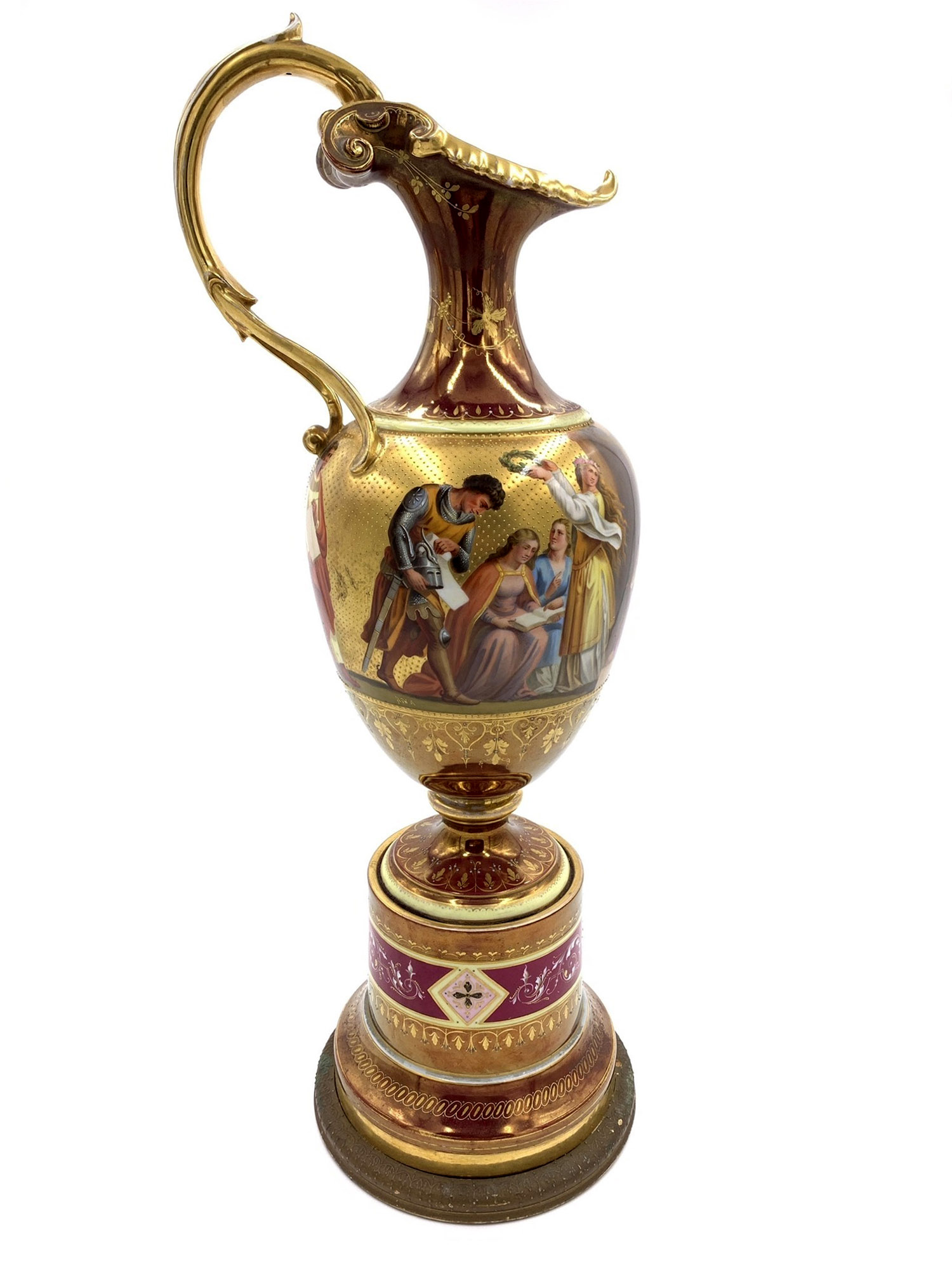Viennese Porcelain
The Vienna porcelain company was founded in 1718 by Claudius Innocentius Du Paquier....
24/11/2023 Blog
I have just come back from Vienna visiting the sights, wandering round the Christmas markets and enjoying sampling the delicious Sacher cake in the many famous Vienna coffee houses.
The trip reminded me of the highly decorative Vienna porcelain factory and the wonderful pair of plaques we recently sold in our last Fine Art sale. They were typical of the wares the factory produced and painted with scenes from Shakespeare within brightly coloured elaborate borders. They were 39cm diameter and realised £2,600 a great price.
The Vienna porcelain company was founded in 1718 by Claudius Innocentius Du Paquier and is the second oldest porcelain company in Europe behind Meissen. The premises was situated in Rossau just outside Vienna. A year later Samuel Stolzel from the Meissen factory joined the company and the two men began successfully producing porcelain specialising in sculptural pieces often with pierced decoration.
The Vienna porcelain factory was given the monopoly to produce porcelain within Austria for 25 years but after this had expired in 1743 the company was sold to Empress Maria Theresa with Du Paquier kept on as a director for a year but the factory was then brought under state administration.

In 1744 the famous factory mark of a shield containing two cross bars was introduced and their wares were streamlined and became more simplified.
The Napoleonic Wars brought the manufacture to the brink of existence but in 1815 the factory revived and specialised in delicate flower decoration.
Later in the 19th century Vienna porcelain is recognised by the beehive mark either in under glazed blue or impressed into the base of an item. Classical scenes are a popular form of decoration with elaborate gilding sometimes even having ormolu or metal mounts.
Almost all Vienna porcelain was meant for display and adoration rather than use with portrait plates, urns, vases and chargers their main output. As well as my favourite the cabaret service. These usually comprise of a circular or rectangular tray upon which sits two cups and saucers, a sugar bowl, cream jug and sometimes a tea or coffee pot. These are now quite difficult to find but a real statement to beauty of the Vienna porcelain wares. Some of the most sort after pieces are signed by the artists. Collectors are always on the look out for these pieces and fetch a premium at auction.